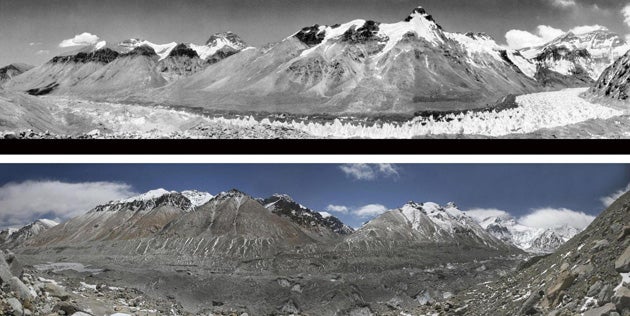Global warming causes Himalaya ice loss to double

Your support helps us to tell the story
From reproductive rights to climate change to Big Tech, The Independent is on the ground when the story is developing. Whether it's investigating the financials of Elon Musk's pro-Trump PAC or producing our latest documentary, 'The A Word', which shines a light on the American women fighting for reproductive rights, we know how important it is to parse out the facts from the messaging.
At such a critical moment in US history, we need reporters on the ground. Your donation allows us to keep sending journalists to speak to both sides of the story.
The Independent is trusted by Americans across the entire political spectrum. And unlike many other quality news outlets, we choose not to lock Americans out of our reporting and analysis with paywalls. We believe quality journalism should be available to everyone, paid for by those who can afford it.
Your support makes all the difference.The glaciers of the Himalayas, suppliers of fresh water to more than a billion people, are undoubtedly retreating because of global warming, the head of the UN's climate change body reaffirmed yesterday – two years after he was embroiled in an international political row about similar forecasts.
Raj Pachauri, the Indian chairman of the Intergovernmental Panel on Climate Change (IPCC), became a controversial figure around the world in December 2009 after a claim in the IPCC's last report, about Himalayan glacier meltback, said that the likelihood of the glaciers disappearing by the year 2035 "is very high". Many scientists criticised this as ridiculous.
Dr Pauchauri at first attacked critics, accusing one of producing "voodoo science" and provoking a widespread controversy which became known as "Glaciergate". He was later forced to apologise and correct the claim in the IPCC report. Yesterday, however, Dr Pachauri reasserted that the glaciers in general were melting back, after the publication of the most authoritative report produced on those in the Himalayan-Hindu Kush region.
The report, from the Kathmandu-based International Centre for Integrated Mountain Development (ICIMOD), used satellite data to establish the geography of the snow cover, revealing for the first time that the number of glaciers in the region is in excess of 54,000.
Only 10 of them, it says, have been closely studied for change in "mass balance" – the shifting volume of the ice which can indicate is a glacier is growing, shrinking or stable. But in these 10, the rate of ice loss has roughly doubled between 1980 and 2005. In the Everest area, the data show a marked acceleration in the loss of glacial mass between 2002 and 2005, the report says.
One of the key implications of the melting is that the glaciers provide the headwaters of the major river systems which come off the Himalayas and provide water for more than a billion people. On the question of a timescale for the glaciers melting completely, Dr Pauchauri said: "It's very difficult, that's something which we have to get much more scientific evidence on."
Join our commenting forum
Join thought-provoking conversations, follow other Independent readers and see their replies
0Comments